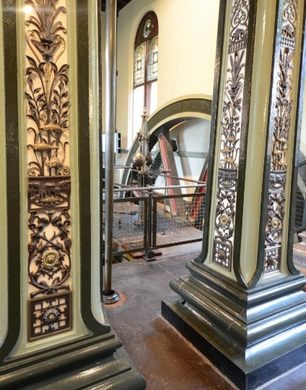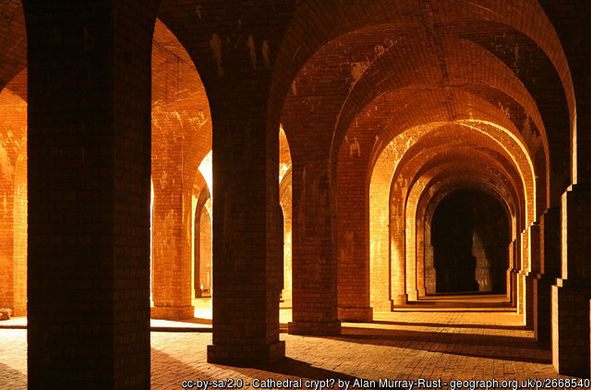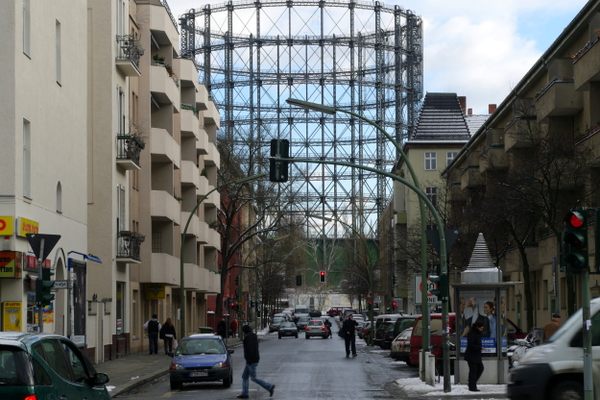Papplewick Pumping Station
This Victorian marvel of engineering and artistic prowess is nicknamed the "Cathedral of Steam."
Down a one-lane road at the southern edge of Sherwood Forest is an ornate engine house nicknamed “The Cathedral of Steam.” The Gothic-revival marvel no longer powers the water supply, but it does make a drop-dead gorgeous museum, and even an occasional steampunk wedding venue.
The historic pumping station dates to the late 19th century, with imposing columns of polished brass reliefs of aquatic wildlife, glowing stained glass windows, and a pair of immense, fully functional, steam-powered beam engines. The old charmer, now run as a charitable museum, was the power behind Nottingham’s safe drinking water from 1884 to its last gasp in 1969.
The pumping station was part of a response to the identification of contaminated drinking water as the principal cause of diseases like cholera and typhoid. Leaders of industrial cities in nineteenth century Britain created municipal waterworks companies in order to improve public health, and the Papplewick example was doubly powerful in its exhibition of Victorian engineering and artistic prowess.
In order to pump water from clean reserves nearly 200 feet (60 meters) below the underlying Sherwood sandstone, the station was built for the rapidly growing city eight miles away. It worked tirelessly for over eight decades, finally rendered obsolete with the installation of submerged electrical pumps.
The Papplewick Pumping Station Trust has run the site since 1974 as a museum, with teams of volunteers to maintain the original steam engines in working order. A triumph of Victorian architecture, the entire complex—including the cavernous vaulted void under Sherwood Forest—is open to the public.
Outside the pumping station is a reservoir to supply water for steam and for cooling the engines, but this is not some simple pond: The Nottingham Corporation created an ornamental lake, complete with fountains, formal gardens, and promenade—all designed, much like the exquisite interior of the engine room, exclusively for the benefit of the Pumping Station workers.
Know Before You Go
The Pumping station is best viewed on the regular "steaming days," when furnaces are lit and the engines are operational. Check the website for details and annual themed steaming days for vintage, reenactment, model-building, and steampunk enthusiasts.
The station is best reached by car, but you can visit by public transport via the "Pronto" bus service and a 20 minute walk, or the nearest train stations are Hucknall and Newstead.



























Follow us on Twitter to get the latest on the world's hidden wonders.
Like us on Facebook to get the latest on the world's hidden wonders.
Follow us on Twitter Like us on Facebook